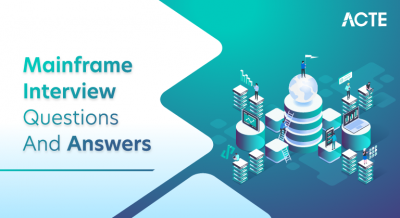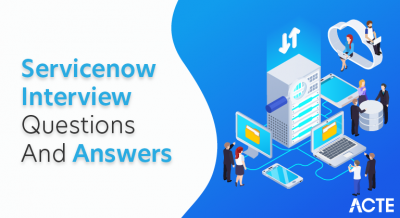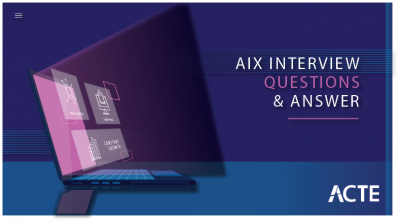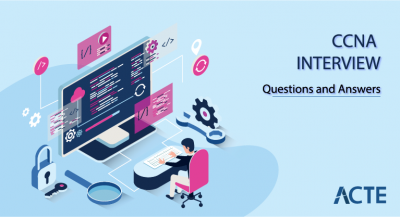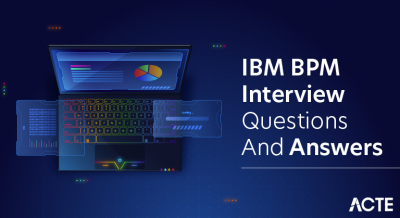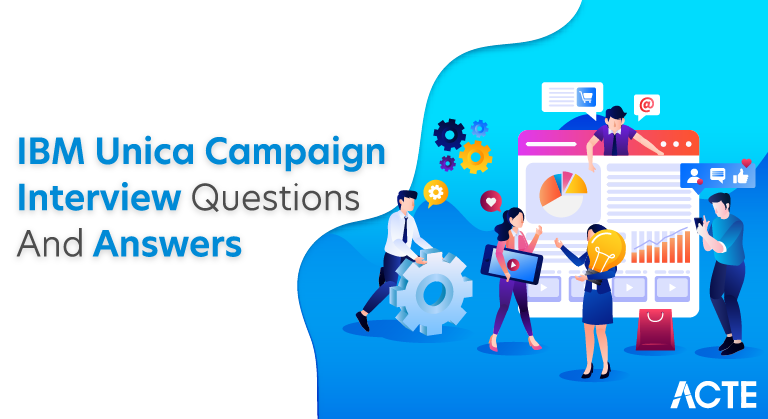
Our IBM Unica Campaign interview questions encompass a wide range of topics aimed at assessing candidates’ competency in using the marketing automation platform. Areas covered include platform features, architecture, segmentation, scripting, integration with external systems, reporting, analytics, and advanced functionalities. The assessment evaluates candidates based on their understanding of Unica Campaign’s role in marketing, its support for multichannel strategies, and its features for personalization and optimization. Technical aspects, such as database processing, API integration, and security considerations, are also explored. Additionally, candidates may be queried on their familiarity with advanced segmentation techniques, scripting skills, and problem-solving approaches specific to the Unica Campaign environment.
1. Can you explain the IBM Unica Campaign?
Ans:
IBM Unica Campaign is a marketing automation platform that enables businesses to design, execute, and manage multichannel marketing campaigns. It provides tools for customer segmentation, personalized content creation, and campaign analytics.
2. In what way does the campaign fit into the marketing landscape?
Ans:
IBM Unica Campaign fits into the marketing landscape by serving as a comprehensive marketing automation solution. It helps marketers strategize, execute, and optimize campaigns across various channels, improving targeting, personalization, and overall campaign effectiveness.
3. What are Campaign Sessions?
Ans:
Campaign Sessions in IBM Unica Campaign refer to distinct instances or periods during which a set of marketing activities and interactions occur. They are used to organize and manage specific campaign-related tasks and executions.
4. Describe the legacy campaigns for us.
Ans:
Legacy campaigns in IBM Unica Campaign refer to historical or pre-existing campaigns that have been executed in the past. They serve as reference points for understanding previous marketing strategies and outcomes.
5. What are the advantages of using campaign software?
Ans:
- Improved efficiency in campaign management
- Enhanced targeting through segmentation
- Personalised communication
- Better tracking of campaign performance
- The ability to analyze and optimize marketing strategies.
6. What is the approach to crafting campaigns?
Ans:
Crafting campaigns in IBM Unica involves a strategic approach that includes defining target audiences, creating personalized offers, selecting communication channels, scheduling campaign execution, and analyzing results for optimization.
7. How do you link offers to a campaign?
Ans:
In the IBM Unica Campaign, offers are linked to a campaign through the offer management functionality. Marketers can associate specific offers with a campaign, ensuring that the right promotions or content are delivered to the target audience.
8. What demographic does the Campaign target?
Ans:
- Age
- Gender
- Location
- Income Level
- Occupational roles.
- Education Level
- Family Size
- Interests and Hobbies
- Buying Behaviour
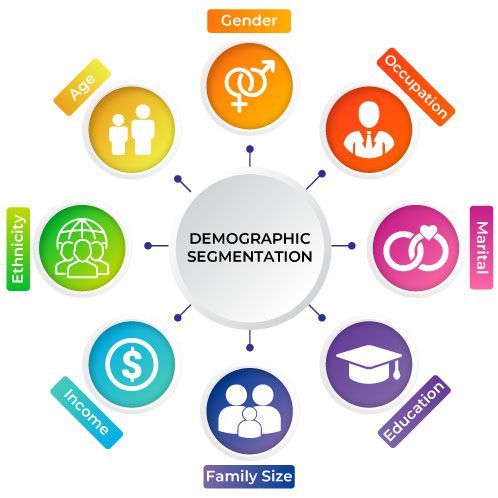
9. What Does a Campaign Model Mean?
Ans:
A Campaign Model in IBM Unica refers to a structured representation of a marketing campaign, including its objectives, target audience, offers, channels, and scheduling. It serves as a blueprint for planning and executing campaigns.
10. How is the validation of the Flowchart conducted?
Ans:
- Verification of Logical Flow
- Checking Data Mapping and Integration
- Aligning Offers and Communications
- Ensuring Segmentation and Targeting Accuracy
- Validating Timing and Scheduling
- Handling Errors and Exception Scenarios
- Integrating with Other Campaign Elements
- Validating User Roles and Permissions
- Ensuring Compliance with Best Practices
- Reviewing Documentation
11. What does the term “Cells in Campaign” mean?
Ans:
In the IBM Unica Campaign, “Cells” refer to specific segments or groups within a campaign. These cells are strategically defined to target particular customer segments with tailored content and offers.
12. Which parts of the campaign are strategically important?
Ans:
- Objective Definition
- Target Audience Identification
- Customer Segmentation
- Offer Development
- Communication Channels Selection
- Content Creation and Personalization
- Budget Allocation
- Data Management and Integration
- Performance Monitoring and Analytics
13. What are the Campaign’s Security Levels?
Ans:
IBM Unica Campaign typically involves security levels that control user access to different features and functionalities. These levels ensure that users have appropriate permissions based on their roles in the campaign management process.
14. What is the process for initiating a campaign?
Ans:
Initiating a campaign involves defining its objectives, identifying target audiences, crafting personalized offers, selecting communication channels, setting scheduling parameters, and configuring other strategic elements before launching the campaign.
15. Which are the main building blocks of the IBM Unica Campaign?
Ans:
The main building blocks of the IBM Unica Campaign include customer segments, offers, communication channels, flowcharts, cells, and other components that collectively contribute to the design and execution of a marketing campaign.
16. What is the procedure for generating a new flowchart?
Ans:
To generate a new flowchart in the IBM Unica Campaign, marketers typically use the platform’s graphical interface to visually design the sequence of campaign activities, decisions, and interactions. The Flowchart represents the logical flow of the campaign.
17. In IBM Unica Campaign, how can campaigns be scheduled and automated?
Ans:
Campaigns in IBM Unica can be scheduled and automated through the platform’s scheduling features. Marketers can set specific dates, times, and recurrence patterns for campaign execution, allowing for timely and automated deployment.
18. What procedures are involved in data manipulation?
Ans:
Data manipulation in the IBM Unica Campaign involves tasks such as
- Filtering
- Cleansing
- Transforming data to meet the requirements of the campaign
19. How can the database processing for a flowchart be turned on?
Ans:
To turn on database processing for a flowchart in IBM Unica Campaign, marketers configure the flowchart settings to enable interaction with the underlying database. This allows for the retrieval and manipulation of customer data during campaign execution.
20. What Does a Campaign Segment Mean?
Ans:
In the context of the IBM Unica Campaign, a “Campaign Segment” refers to a subgroup or category of the target audience defined based on specific criteria such as demographics, behavior, or other relevant attributes. Segmentation allows for personalized targeting within a campaign.
21. What does a campaign’s cube mean?
Ans:
In Unica Campaign, a “cube” refers to a multidimensional dataset containing information about customers, offers, and responses. It facilitates analysis and reporting, allowing marketers to learn more about consumer behavior and campaign performance.
22. How does customer data contribute to segmentation in the Unica Campaign?
Ans:
Customer data in Unica Campaign contributes to segmentation by providing information on demographics, behaviors, and preferences. This data is used to define distinct customer segments, enabling targeted and personalized campaign strategies.
23. What are the campaign’s audience levels?
Ans:
The campaign’s audience levels represent different layers or segments of the target audience, each defined based on specific criteria. Examples include primary audience, secondary audience, and other segments that help tailor messaging to different customer groups.
24. How Do You Calculate a Score?
Ans:
Scoring in Unica Campaign involves assigning numerical values to customers based on predefined criteria such as engagement, purchase history, or other relevant factors. The cumulative score helps prioritize and target customers in a campaign.
25. Differentiate between customer segmentation and target audiences.
Ans:
| Criteria | Customer Segmentation | Target Audiences | |
| Definition |
The process of categorizing the entire customer base into groups based on shared characteristics, behaviors, or attributes. |
A specific group of customers chosen for a particular marketing campaign or initiative. | |
| Purpose | To analyze and classify customers into distinct groups for personalized messaging and targeted engagement. | To pinpoint a subset of customers for focused marketing efforts, tailoring messages to their specific needs. | |
| Scope |
Encompasses the entirety of the customer base, offering a comprehensive view of various customer segments. |
Focuses on a particular subset of customers relevant to a specific marketing initiative or campaign. | |
| Timeframe | An ongoing process that adapts to changing customer behaviors over time, supporting long-term marketing strategies. | Applied temporarily for specific campaigns or initiatives, aiming for immediate and campaign-specific outcomes. | |
| Customization and Personalization |
Facilitates customization of messages based on the characteristics of each segment, allowing for personalized content. |
Involves tailoring messages to meet the specific needs and interests of the selected target audience. | |
| Strategic Use |
Utilized for long-term marketing strategies, informing overall business strategies and customer relationship management. |
Employed for short-term campaigns or initiatives, with a focus on achieving immediate and specific outcomes. | |
| Measurable Impact | Sudden spikes in metrics, followed by a swift decline | Gradual and sustained impact, with measurable growth over time | |
| Examples | Segments may include high-value customers, loyal customers, occasional buyers, etc. | Target audiences may include a group targeted for a new product launch, a seasonal promotion, etc. |
26. What does “Extract in Campaign” mean?
Ans:
“Extract in Campaign” refers to the process of extracting data from the Unica Campaign environment. This extracted data can be used for further analysis, reporting, or integration with other systems outside of the Unica Campaign platform.
27. Which means of communication are supported by the Unica Campaign?
Ans:
Unica Campaign supports various means of communication, including email, SMS, direct mail, social media, and other channels. This flexibility allows marketers to engage with customers through multiple touchpoints.
28. What Does the Campaign’s Schedule Mean?
Ans:
The campaign’s schedule refers to the planned timeline for executing various campaign activities. It includes start and end dates, as well as specific timeframes for deploying offers, communications, and other campaign elements.
29. Describe the main attributes and functionalities of the IBM Unica Campaign.
Ans:
The main attributes and functionalities of the IBM Unica Campaign includes
- Customer segmentation
- Offer management
- Communication channel selection
- Workflow customization
- Reporting and analytics
- Automation features for efficient campaign execution.
30. What is the process of optimization?
Ans:
When working in IBM Campaign (and all Campaign Management Software) it pays to understand what the software is doing behind the scenes. Nearly every time you add a box in a Unica flow chart it is creating a temporary database table with just a list of ids. A simple select statement will run and save a table like the one shown in the image below. When you then link that select box to another one it uses the first temporary table as its starting point. This makes the queries more efficient by starting with a smaller base at each new level.
31. What is meant by the term ‘response’ in the context of a campaign?
Ans:
In the context of a campaign, a “response” refers to a measurable action or engagement from a customer, such as clicking on an email, making a purchase, or any other desired behavior triggered by the campaign.
32. What Do Offers Mean?
Ans:
Offers in the context of a campaign refer to the specific incentives or content presented to customers as part of a marketing message. Offers can include discounts, promotions, personalized recommendations, or any value proposition designed to encourage customer response.
33. Is it possible to choose more than one table to feed into a process?
Ans:
Yes, in the Unica Campaign, it is possible to choose more than one table to feed into a process. This flexibility allows marketers to leverage data from multiple sources, enhancing the richness and relevance of customer information used in campaign processes.
34. What Benefits Does the Profile Feature Offer for the Campaign?
Ans:
The Profile feature in Unica Campaign provides a comprehensive view of customer attributes, behaviors, and interactions. This offers benefits such as improved targeting, personalization, and the ability to tailor campaigns based on a deep understanding of individual customer profiles.
35. What is the process for configuring these communication channels in the Unica Campaign?
Ans:
Configuring communication channels in Unica Campaign involves selecting and defining the channels through which marketing messages will be delivered. This process includes configuring email templates, defining SMS content, or setting up other communication methods to engage with the target audience.
36. What distinguishing features does Offer have?
Ans:
Offers in Unica Campaign have distinguishing features such as customization options, personalized content, associated business rules, and the ability to be linked to specific customer segments. These features allow for targeted and effective campaign execution.
37. How to install and set up the IBM Unica Campaign?
Ans:
The installation and setup of the IBM Unica Campaign involve steps like system requirements verification, software installation, configuring databases, setting up security parameters, and defining user roles. The specific process may vary based on the version and deployment environment.
38. What kinds of marketing campaigns may Unica Campaign be used to build and manage?
Ans:
Unica Campaign can be used to build and manage various marketing campaigns, including email campaigns, direct mail campaigns, social media campaigns, mobile campaigns, and other multichannel marketing efforts.
39. In the Unica Campaign, how are target audiences and customer segments defined?
Ans:
In the Unica Campaign, target audiences and consumer groups are identified according to certain standards, including demographics, behaviors, past purchases, and other pertinent characteristics. Marketers use segmentation tools to create distinct groups for targeted campaign strategies.
40. Describe the process of running and monitoring marketing campaigns.
Ans:
Running and monitoring marketing campaigns in Unica Campaign involve
- Initiating the campaign based on the defined schedule,
- Tracking customer responses,
- Analyzing performance metrics,
- Making choices based on data in order to enhance and optimize the next campaigns.
The process includes real-time monitoring and post-campaign analysis for continuous refinement.
41. What analytics features does the Unica Campaign offer?
Ans:
Unica Campaign offers robust analytics features, including campaign performance tracking, customer behavior analysis, and reporting on reporting on important data like ROI, conversion rates, and response rates.
42. How can these analytics features be utilized in the Unica Campaign?
Ans:
The analytics capabilities of Unica Campaign, which can also be used to assess the effectiveness of the success of advertising initiatives and provide perceptions on consumer behavior, may help guide strategic decisions. Marketers may optimize campaigns in the future by using data-driven insights from report analysis.
43. Highlight advanced features in Unica Campaign, like advanced segmentation techniques.
Ans:
Unica Campaign includes advanced segmentation techniques such as
- Dynamic segmentation
- Predictive analytics
- Rule-based segmentation
44. Could you give any examples of Unica Campaign rule-based personalization?
Ans:
Rule-based personalization in Unica Campaign allows marketers to customize content based on predefined rules. For example, a rule might dictate that customers who have made a recent purchase receive personalized offers related to their previous buying preferences.
45. Describe how machine learning is used in the Unica Campaign’s advanced features.
Ans:
Machine learning in Unica Campaign is leveraged for predictive analytics, allowing the platform to analyze historical data and make predictions about future customer behavior. This helps optimize targeting and personalize campaigns for better engagement.
46. Describe the architecture of the Unica Campaign’s disaster recovery procedures.
Ans:
Unica Campaign’s architecture for disaster recovery typically involves redundancy and backup measures. Data is regularly backed up, and failover systems are in place to ensure minimal disruption in the event of a disaster.
47. What advanced elements of the Unica Campaign make use of predictive analytics?
Ans:
Advanced elements of Unica Campaign, such as predictive analytics, are used in forecasting customer responses, identifying potential high-value customers, and optimizing campaign strategies based on predicted outcomes.
48. What is the role of the Web Application Server in Unica Campaign’s architecture?
Ans:
The Web Application Server manages the web-based user interface in Unica Campaign. Through a graphical interface that can be accessed through a web browser, it makes user interactions, campaign planning, and administration easier.
49. Explain Unica Campaign’s scripting or programming capabilities for customization.
Ans:
Unica Campaign provides scripting and programming capabilities for customization, allowing users to implement custom logic and functionalities. This enables the tailoring of campaign workflows, data manipulations, and other processes to meet specific business requirements.
50. How do decision trees contribute to advanced customization and decision-making in the Unica Campaign?
Ans:
Decision trees in Unica Campaign enable advanced customization by providing a visual representation of decision logic. They help marketers make complex decisions based on various conditions, improving the personalization and effectiveness of campaigns.
51. Define rule-based personalization in the context of the Unica Campaign.
Ans:
Rule-based personalization in Unica Campaign involves defining conditions or rules that determine the content, offers, or actions delivered to customers. These rules are based on specific criteria, ensuring tailored interactions for different segments.
52. What tactics may be used in the Unica Campaign to deal with complex segmentation scenarios?
Ans:
Tactics for dealing with complex segmentation scenarios in Unica Campaign include
- Utilizing advanced segmentation techniques,
- Employing decision trees,
- Leveraging machine learning and
- Incorporating rule-based personalization to address diverse customer groups effectively.
53. Describe the Database Server’s function in the architecture of the Unica Campaign.
Ans:
The Database Server in Unica Campaign’s architecture is responsible for managing and storing campaign-related data. It facilitates efficient data retrieval and manipulation, supporting personalized interactions and decision-making within the campaign.
54. Explain integrating Unica Campaign with external APIs for enhanced functionality.
Ans:
Integrating Unica Campaign with external APIs involves connecting the platform to external applications or services to enhance its functionality. This integration allows for seamless data exchange, expanded features, and improved overall campaign management.
55. What security measures are implemented in Unica Campaign’s architecture?
Ans:
- User authentication
- Access control levels
- Encryption of sensitive data
- Audit trails for activity monitoring
- Compliance with industry standards to safeguard against unauthorised access and data breaches.
56. Define customized triggers and their role in Unica Campaign’s event-based campaigns.
Ans:
Customized triggers in Unica Campaign are predefined events or conditions that initiate specific actions or campaigns. In event-based campaigns, these triggers activate personalized responses based on customer interactions or behaviors, enhancing the relevance of campaigns.
57. Describe the role of APIs in the Unica Campaign customization process.
Ans:
APIs (Application Programming Interfaces) in Unica Campaign facilitate customization by allowing seamless integration with external systems or applications. This integration enables the exchange of data and functionality, enhancing the overall capabilities of the Unica Campaign.
58. Define predictive analytics.
Ans:
In the Unica Campaign, predictive analytics entails analysing past data and projecting future results through the application of statistical techniques and machine learning. It aids in targeted optimization, improving marketing efficacy, and anticipating consumer behaviour.
59. What Exactly Is A Campaign Model?
Ans:
A Campaign Model in Unica Campaign is a structured representation of a marketing campaign. It includes the definition of campaign objectives, target audiences, offers, communication channels, scheduling, and other strategic elements. The model serves as a blueprint for planning and executing campaigns.
60. How does the Unica Campaign handle multivariate testing and its impact on reporting?
Ans:
Unica Campaign facilitates multivariate testing by allowing marketers to create variations of offers, messages, or other elements within a campaign. The impact on reporting involves analyzing the performance metrics of these variations to determine the most effective elements for future optimization.
61. Explain the purpose of the Decision Server in the Unica Campaign.
Ans:
The Decision Server in Unica Campaign is responsible for processing business rules and logic to determine the best offers and treatments for individual customers. It plays a crucial role in decision-making during campaign execution.
62. What is the role of dynamic content in tailoring offers within the Unica Campaign?
Ans:
Dynamic content in Unica Campaign allows for personalized and customized offers by dynamically adjusting content based on customer attributes or behaviors. It tailors offers to match the preferences and characteristics of individual customers.
63. What is the architecture of Unica Campaign’s handling of fixes and upgrades?
Ans:
Unica Campaign’s architecture for handling fixes and upgrades involves a systematic process where fixes are applied to resolve issues, and upgrades introduce new features or improvements. This process typically includes testing and validation before implementation.
64. Describe the data flow between the Campaign Engine and other architecture components.
Ans:
Data flows between the Campaign Engine and other architecture components involve the exchange of customer data, segmentation information, and campaign instructions. The Campaign Engine processes this data to execute targeted campaigns through various channels.
65. Can you discuss the role of user roles and permissions in the Unica Campaign?
Ans:
The degree of access and activities that users may carry out on the platform is determined by their user roles and permissions in Unica Campaign. Roles ensure that users have rights according to their campaign management duties.
66. Explain the role of the Campaign Engine in Unica Campaign architecture.
Ans:
The Campaign Engine in Unica Campaign architecture is the core component responsible for executing marketing campaigns. It processes data, applies business rules, and determines the appropriate treatments for individual customers during campaign execution.
67. Please elaborate on the idea of Unica Campaign’s offer prioritization.
Ans:
Offer prioritization in the Unica Campaign involves assigning priority levels to different offers within a campaign. The platform uses business rules and algorithms to determine which offers are most relevant or suitable for individual customers, optimizing the likelihood of response.
68. How is real-time customization implemented in the Unica Campaign?
Ans:
Real-time customization in Unica Campaign is achieved by dynamically adjusting campaign elements based on customer interactions or behaviors. The platform responds to customer actions in real time, tailoring content or offers to enhance the customer experience.
69. Describe how historical data contributes to offer management and optimization.
Ans:
Historical data in the Unica Campaign provides insights into past customer interactions, preferences, and responses. This information contributes to offer management by helping marketers understand what has been successful in the past, facilitating the optimization of future campaigns for better targeting and engagement.
70. Define personalization.
Ans:
Customizing products, experiences, or content for specific users according to their tastes, habits, and traits is known as personalization. The objective is to generate more pertinent and captivating exchanges, cultivating a customized and significant client encounter.
71. Why is personalization important in Unica Campaign and overall marketing strategies?
Ans:
Personalization in Unica Campaign and broader marketing strategies is crucial for enhancing customer engagement and satisfaction. By delivering personalized content and offers, marketers can significantly improve the effectiveness of campaigns, increase customer loyalty, and drive better overall marketing outcomes.
72. How does the Unica Campaign handle upgrades and patches?
Ans:
Patches and upgrades in Unica Campaign are usually handled by following a methodical procedure. In order to keep the program up to date with the newest features, security improvements, and bug fixes, the platform offers customers the tools and documentation they need to install upgrades.
73. How can Unica Campaign be utilized for conducting A/B testing of different offers?
Ans:
Unica Campaign facilitates A/B testing by allowing marketers to create multiple variations of offers and assess their performance. Marketers can compare the response rates and effectiveness of different offers, enabling data-driven decisions for optimizing future campaigns.
74. Explain how customer feedback and response data refine future offers in the Unica Campaign.
Ans:
Customer feedback and response data in the Unica Campaign are analyzed to understand the preferences and behaviors of the audience. This valuable information is then used to refine and tailor future offers, ensuring that campaigns are more effectively targeted and personalized to meet customer expectations.
75. Describe any limitations associated with the Unica Campaign.
Ans:
While Unica Campaign is a robust marketing automation platform, some limitations may include a learning curve for new users, resource-intensive implementation, and potential challenges with complex customizations. Organizations need to be aware of these factors when deploying the platform.
76. What are some advanced segmentation techniques available in the IBM Unica Campaign?
Ans:
- Behavioural Segmentation
- Predictive Analytics
- RFM Segmentation
- Loyalty Segmentation
- Dynamic Segmentation
- Personalized Content Segmentation
- Cross-Sell and Upsell Segmentation
- Segmentation with Machine Learning
- Event-Based Segmentation
77. Explain the process of creating and sharing standardized reports in the Unica Campaign.
Ans:
Using the reporting and analytics tools in Unica Campaign, standardized report creation entails producing organized and uniform reports. The sharing and distribution features of the platform allow these reports to be sent throughout the enterprise.
78. How does Unica Campaign enable benchmarking and comparing campaign performance over time?
Ans:
Unica Campaign enables benchmarking by providing tools for tracking and analyzing key performance indicators (KPIs) over time. Marketers can compare current campaign performance with historical data, allowing for insights into trends, successes, and areas for improvement.
79. Define the Campaign Engine in the context of the Unica Campaign.
Ans:
The Campaign Engine in Unica Campaign is the core component responsible for executing and managing marketing campaigns. It interprets campaign logic, processes customer data, and coordinates the delivery of personalized offers and communications to target audiences.
80. What is the External Systems Interface?
Ans:
The External Systems Interface in Unica Campaign is a feature that allows seamless integration with external systems, databases, or third-party applications. It facilitates the exchange of data and information between the Unica Campaign and other systems.
81. How does the External Systems Interface function in the Unica Campaign?
Ans:
The External Systems Interface functions by providing a standardized mechanism for data exchange between Unica Campaign and external systems. It enables the platform to pull in or push out data, ensuring interoperability and consistency across different systems.
82. Define real-time customization.
Ans:
Real-time customization in Unica Campaign refers to the ability to dynamically adapt and personalize marketing content, offers, or messages in real time based on immediate customer interactions, behaviors, or external triggers.
83. Define privacy considerations in the context of the Unica Campaign.
Ans:
Regarding privacy, the Unica Campaign takes into account the moral and legal implications of managing consumer data. This entails securing consent for data usage, adhering to data protection laws, and putting security measures in place to secure sensitive data.
84. What is multichannel marketing?
Ans:
Engaging with consumers across a variety of communication channels, including email, social media, direct mail, and more, is known as multichannel marketing. The aim is to create a unified and seamless consumer experience across several touchpoints.
85. How does Unica Campaign support multichannel marketing?
Ans:
Unica Campaign supports multichannel marketing by allowing marketers to design and execute campaigns that span across different communication channels. It provides tools for coordinating and optimizing messages across various channels to deliver a cohesive customer experience.
86. Explain the options for integrating Unica Campaign with external APIs.
Ans:
Integration with external APIs in Unica Campaign can be achieved through various options, including RESTful APIs or SOAP APIs. These interfaces enable the exchange of data and functionality between Unica Campaign and external applications or systems.
87. Define cross-channel reporting in the context of the Unica Campaign.
Ans:
In Unica Campaign, cross-channel reporting entails examining and summarizing campaign performance indicators from several channels of communication. It offers perceptions on how various channels affect a marketing campaign’s overall performance.
88. Explain the role of the Campaign User Interface in Unica Campaign architecture.
Ans:
The graphical user interface that lets users engage with the platform in Unica Campaign is called the Campaign User Interface. It offers an easy-to-use interface for managing client groups, creating campaigns, and accessing other Unica Campaign capabilities.
89. How does Unica Campaign handle multivariate testing?
Ans:
Marketers may test several versions of campaign elements, including offers or content, with Unica Campaign, which manages multivariate testing. It evaluates each variation’s performance to identify the best mix for accomplishing marketing goals.
90. What is the impact of multivariate testing on reporting in the Unica Campaign?
Ans:
Multivariate testing in Unica Campaign impacts reporting by providing insights into the effectiveness of different campaign variations. It helps marketers understand which elements contribute most to campaign success, facilitating data-driven decisions for future optimizations.


